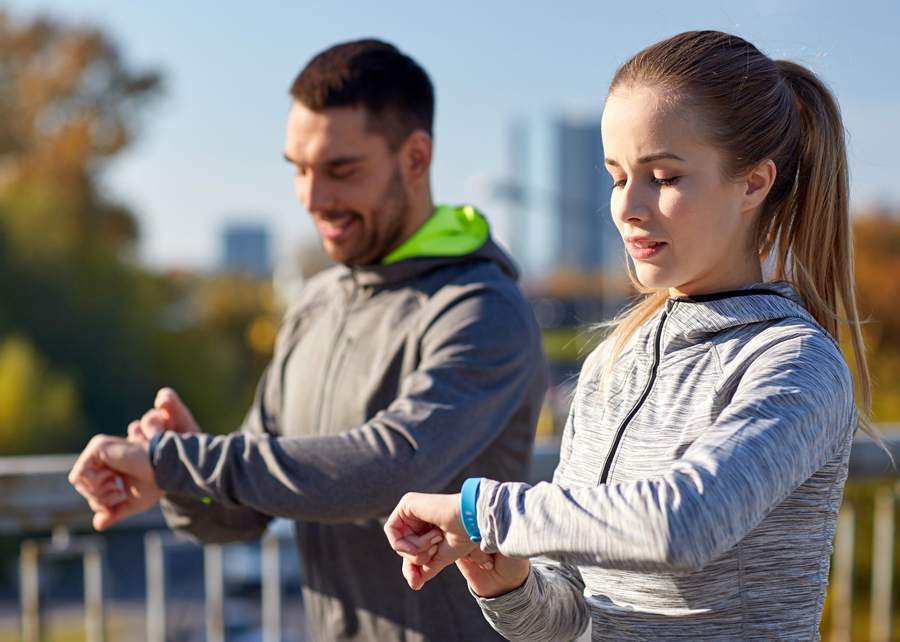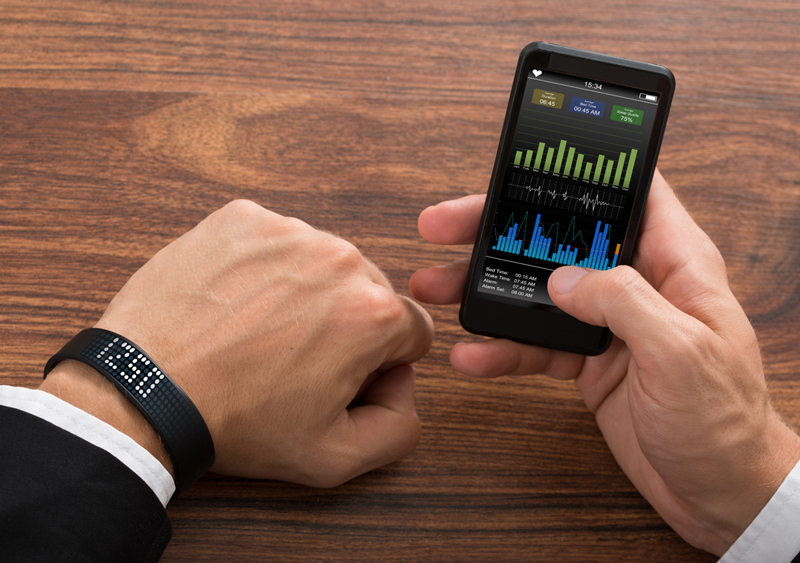BY MARK KINI

I make a point to call my mother every day. She is 84 and suffered a bad hip fracture a year ago. She loves to be active and on the move, unfortunately her recovery process has been slow, and she needs the assistance of a walker. My mom has a Fitbit and when I called her yesterday, she was so happy she walked 4,000 steps in a single day. This is a huge accomplishment for anyone who is elderly.
Fitness tracking has undergone a transformation in the past decade. What started as basic pedometers has evolved into a sophisticated network of apps, watches, and accessories that give real-time health insights, offer personalized workout plans, and track everything from sleep to heart rate to breathing. Whether you’re a casual jogger or a seasoned athlete, there’s a tool out there designed to help you reach your fitness goals.
Let’s take a dive into the world of fitness apps, watches, and accessories to get detailed examples and insights into how each can improve your health and performance.
Fitness Tracking Apps
These apps, which are often available on both smartphones and tablets, enable users to log exercises, track progress, and access workout and nutrition plans. Some can sync with wearables, while others function independently by leveraging phone sensors.
MyFitnessPal
❱ Features: Known primarily as a calorie counter, MyFitnessPal helps users track their food intake and exercise. It has an extensive database of foods and includes a barcode scanner for easy logging. In addition to tracking calories, it provides macronutrient breakdowns and integrates with various fitness trackers and apps.
❱ Strengths: Its robust food database and seamless integration with other health apps make it a favorite among users aiming to lose weight or maintain their diet.
❱ Weaknesses: The free version has limited access to premium features, and its reliance on user-generated food data can sometimes lead to inaccuracies.
Strava
❱ Features: Popular among runners and cyclists, Strava records your workouts using GPS and tracks your speed, distance, elevation, and performance over time. It includes community-driven features like segments (specific routes where users can compare their performance) and social sharing.
❱ Strengths: Its detailed analyses of runs and rides, paired with its social platform, make it ideal for competitive individuals or those looking to improve endurance.
❱ Weaknesses: Some advanced analytics and features like route planning are behind a paywall.
Nike Training Club
❱ Features: Nike’s app provides users with free workouts led by professional trainers. It offers routines for all levels, ranging from yoga to high-intensity interval training (HIIT), and users can filter by duration, equipment, or goal.
❱ Strengths: Free access to high-quality, guided workouts, and the diversity of exercises offered.
❱ Strengths:❱ Weaknesses: Lacks deeper tracking functionality for those seeking detailed health metrics beyond workouts.
 Fitness Watches
Fitness Watches
Fitness watches have evolved far beyond just counting steps. Modern wearables track heart rate, sleep quality, stress levels, and more. These devices can serve as a personal coach, reminding users to stay active, and helping to optimize workouts by providing real-time data.
Apple Watch Series 9
❱ Features: The Apple Watch Series 9 does it all, from tracking heart rate to monitoring blood oxygen levels and providing electrocardiogram readings. It integrates seamlessly with Apple’s Fitness+ service and supports third-party fitness apps like Strava and MyFitnessPal. It also offers guided breathing exercises and detects irregular heart rhythms.
❱ Strengths: Its ecosystem integration with iPhone and a wide array of health and fitness features, paired with its sleek design.
❱ Weaknesses: Pricey compared to other options, and battery life is a concern for heavy users (typically around 18 hours).
Garmin Forerunner 955
❱ Features: Garmin’s Forerunner line is renowned for its precision in tracking runs, swims, and cycling workouts. The Forerunner 955 includes advanced metrics like VO2 max, lactate threshold, and even predicts race times based on your current fitness level. It also features multi-sport tracking and has long battery life (up to two weeks in smartwatch mode).
❱ Strengths: Precise GPS tracking, deep metrics for serious athletes, and a wide range of fitness activities supported.
❱ Weaknesses: Garmin watches, while excellent for performance tracking, may feel bulky to some users.
Fitbit Charge 6
❱ Features: Fitbit’s Charge 6 is a slim, stylish tracker that focuses on general health and fitness. It tracks heart rate, blood oxygen (SpO2), sleep stages, and stress levels using its electrodermal activity (EDA) sensor. With Fitbit Premium, users gain access to guided workouts, mindfulness sessions, and health trend reports.
❱ Strengths: Compact design with a good balance of fitness and health features at a mid-range price point. It is also integrated with Google, which owns the Fitbit brand.
❱ Weaknesses: Certain premium features are locked behind a subscription service.
Accessories for Fitness Tracking
Beyond apps and watches, there’s a growing market of accessories designed to enhance the fitness tracking experience.
Whoop Strap 4.0
❱ Features: Whoop takes a unique approach by focusing more on recovery and strain rather than exercise alone. The Whoop Strap measures heart rate variability, sleep quality, and the daily strain on your body, then provides recommendations on how much exertion you should aim for each day.
❱ Strengths: Ideal for athletes focused on optimizing performance through recovery. Its sleek design is comfortable for 24/7 wear.
❱ Weaknesses: Requires a monthly subscription to access data, and there’s no screen on the strap itself—everything is viewed via the app.
Polar H10 Heart Rate Monitor
❱ Features: The Polar H10 is a chest strap that provides more accurate heart rate readings than wrist-worn devices. It’s popular among athletes for its precision and ability to sync with a variety of fitness apps and gym equipment.
❱ Strengths: Its superior accuracy, compared to wrist-based heart rate monitors, makes it a favorite for endurance athletes.
❱ Weaknesses: Wearing a chest strap can be uncomfortable for some users during long workouts.
Smart Water Bottles
❱ Features: Smart water bottles like the HidrateSpark PRO track your water intake and remind you to stay hydrated throughout the day. They sync with your phone and fitness trackers to adjust hydration goals based on activity levels.
❱ Strengths: Helps users stay mindful of hydration, a crucial yet often overlooked part of health and fitness.
❱ Weaknesses: It’s an extra device to carry, and some might find the price tag high for a water bottle.
The world of fitness tracking offers a wide range of options to suit different lifestyles and fitness goals. Whether you’re looking for a versatile smartwatch like the Apple Watch, a performance-focused tool like the Garmin Forerunner, or even an accessory like the Whoop Strap that emphasizes recovery, there’s a solution for everyone. These tools can enhance your understanding of your body, help optimize workouts, and keep you accountable on your fitness journey. By leveraging a combination of apps, watches, and accessories, achieving your health and fitness goals has never been more accessible. [CD1124]
Mark Kini is the President & CEO of Boston Chauffeur. He can be reached at mark@bostonchauffeur.com. Follow me bostonfitexec.

